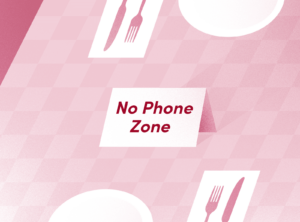Please Turn On Your Cell Phone

Juliette LaMontagne points out that urban students around America arrive to school every day with portable learning devices in their pockets and purses. Why aren’t they using them more proactively?
Here are her thoughts:It might surprise you to learn that students from New York City’s most impoverished neighborhoods arrive at school each day with personal computers. The problem is that they deposit these powerful learning tools at the nearby bodega—where they’re held like a coat check service for a dollar a day—because their personal computers are cell phones, and they are banned by New York City’s school chancellor, Joel Klein. Many students will circumvent the ban by blind-texting from their backpacks or from the bathroom. But it’s not that simple for those who have to pass through metal detectors and scanners to gain entry into the school building each day.
The rationale for the cell phone ban will not surprise you: critics claim they’re distracting, can be used to cheat, and add no educational value. In a speech to the National Urban League, Mayor Michael Bloomberg said, “You come to school to learn, not to play games or send text messages.” Apparently, his words were aimed at students and administrators alike; last month text-messaging service on all Department of Education issued devices was disabled. Only weeks earlier, US Secretary of Education, Arne Duncan, came out in support of cell phone use saying, “Finding ways to use cell phones to deliver lesson plans to students would improve education and meet federal guidelines.”
Duncan’s position is wise if only in that it acknowledges several undeniable facts: there are 4 billion cell phone subscribers worldwide today, compared to 1.6 billion internet users. In the US, 76% of students ages 12-18 have their own cell phone. Forward thinking educators recognize in these statistics a low-tech, low-cost solution to the ongoing technology problem in underserved schools where hardware is dysfunctional, wireless infrastructure is weak, and inadequate staffing fails to meet the demands of upkeep. Even a school like The Global Learning Collaborative, part of New York City’s technology innovation initiative, NYC21C, will open its doors in September equipped with fewer than ten computers for an incoming class of 104 ninth-graders. The bottom line is cell phones are the most affordable, accessible way to provide access to technology and narrow the digital divide. And while smart phones and their education applications will undoubtedly transform learning as we know it, these are not the phones I am advocating for at present, because they are not the phones my students (or teachers) typically own. Like Liz Kolb, an expert in cell phones in learning, I believe we need to utilize the technology we have available to us.
But advocating for cell phone use in education is about more than cost, sustainability, or parity; it’s about accessing points of entry. When it comes to technology integration, you need to meet students (and teachers) where they are. When you begin with a tool they already know and love, you’re less likely to be met with the kind of resistance you might otherwise get to institutional hardware or software. For teachers, eliminate the fear factor and you’ve empowered a previously disenfranchised group of self-professed Luddites. For students, who treat the cell phone like an appendage, you’re capitalizing on an existing passion for the technology.
Instructional goals are always our first and foremost concern; the technology, whatever its form, is a tool to assist us in meeting these goals. In the model of the Asia Society International Studies School Network, we prepare college-ready, globally competent students by requiring them to participate in learning engagements both within and beyond the classroom. Internships, service learning, foreign and domestic travel, and learning expeditions of all kinds develop students’ methods of inquiry. What’s especially exciting about integrating cell phone use into the curriculum is the opportunity to extend and better support the rich learning that’s already happening outside of our classrooms (while also allowing us to work around the ban).
We design inquiry-based curricula that send students out into the world to investigate, collect, report, reflect, and engage. In doing so, students gain a sense of themselves as producers of knowledge. They become part of a continuous learning loop of inputs and outputs mediated by teacher and student alike. With basic mobile functions like voice, text, and camera coupled with web 2.0 technologies, students’ knowledge can be shared locally and globally, all the while developing critical communication and collaboration skills. Audiocasting, photoblogging, polling, surveying, and language acquisition are just a few of the activities that utilize mobile devices for learning outcomes. These are context-specific opportunities for students to share with authentic and limitless audiences. And for teenagers, to share is to be—which lies at the heart of their love for the cell phone to begin with. As educators, we need to leverage this love to help students transform their communication networks into learning networks. There’s a wealth of untapped learning potential in those seemingly inane text messages; Twitter is one powerful example. If we’re successful in facilitating this transformation, then we have truly created a culture of life-long learners who make no distinction between formal and informal learning environments, who learn whenever and wherever they are curious.
Yes, there are challenges: lack of plan uniformity, small screens, and truncated communication styles are often pointed to. But we mustn’t surrender to shortsighted interpretations of mobile devices in schools. We do need to establish norms of behavior, but let’s move swiftly through discussions of acceptable use to the wider implications for learning and digital literacy. Mobile devices are, and will continue to be, an integral part of our students’ lives. Let’s aid their understanding of them as portals to learning.





Jay Delmore
This is a great article, and you are doing a great job with edReformer.